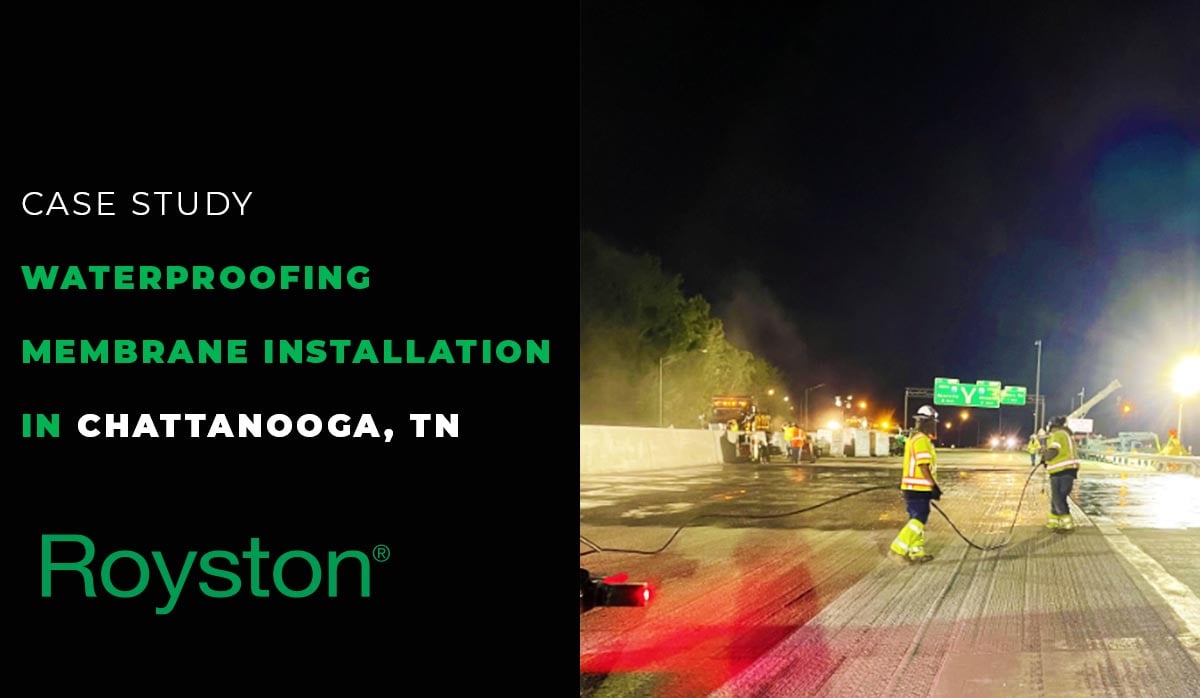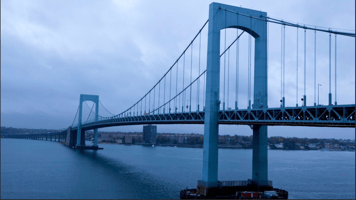The waterproofing sheet membrane system is a reliable and durable method of protecting bridge...
Case Study: Royston 10A 65 Membrane in Germantown Rd in Chattanooga, TN
Installing Waterproof Sheet Membranes
Waterproofing sheet membranes are specified and installed on a variety of structures: above and below-grade foundations, parking garages, culverts and bridge decks. The substrates can be asphalt, steel or concrete. Bridge decks—both steel and concrete—comprise the majority of projects where waterproofing membranes are installed. There are multiple types of membranes, one of the most popular has a fiberglass carrier sandwiched between two layers of polymer-modified bitumen.
Related Article: The Ultimate Guide to Understand Expansion Joint Types

Application of Bitumen Primer-Adhesive
The easy installation process consists of applying a primer-adhesive coat, installing the rolls of membrane, overlapping rolls by three inches until the deck is covered. Then either heat seal, apply an adhesive sealant or waterproofing mastic to all transverse and longitudinal joints and termination points. After installing the waterproofing membrane, the asphalt wearing course can be placed. A critical component of the process is the required minimum temperature of 290°Farenheit of the asphalt at the paver. This temperature is required to properly activate the bitumen adhesive.

Installation of sheet membrane on the bridge deck
Case Study: The Germantown Road Bridge Project
A great example of the fast and simple installation of Royston Membranes is the Germantown Road Bridge Project in Hamilton County, Tennessee. Royston 10A 65 Waterproofing Membrane was specified by the Tennessee Department of Transportation. The General Contractor was Bell & Associates, and ProTech Coatings performed the installation. The installation of the waterproofing membrane and placement of the asphalt overlay had to be completed during the weekend of June 25th through June 27th. This project required a critical closure of the bridge for weekend work.
The project consisted of milling up the old, existing overlay, cleaning and preparing the deck to receive the coat of primer-adhesive. After the required primer cure-time, the membrane was installed, followed by the sealing of the joints and termination points. Once this work was completed, the paving contractor placed the asphalt-wearing course. In addition, the installation had to be coordinated with the other required trades to complete the project’s scope of work within the advertised time period. Because of the easy installation of the waterproofing membrane, the contractor was able to meet the project timetable, and work was successfully completed.
Related Article: Waterproofing Membranes for Pennsylvania DOT
The products used on the project were Chase Corporation’s Royston 10A 65 Membrane, Roybond 713B Primer-Adhesive and 104 CM Mastic. Chase Corporation can provide product solutions and technical assistance for your projects.







